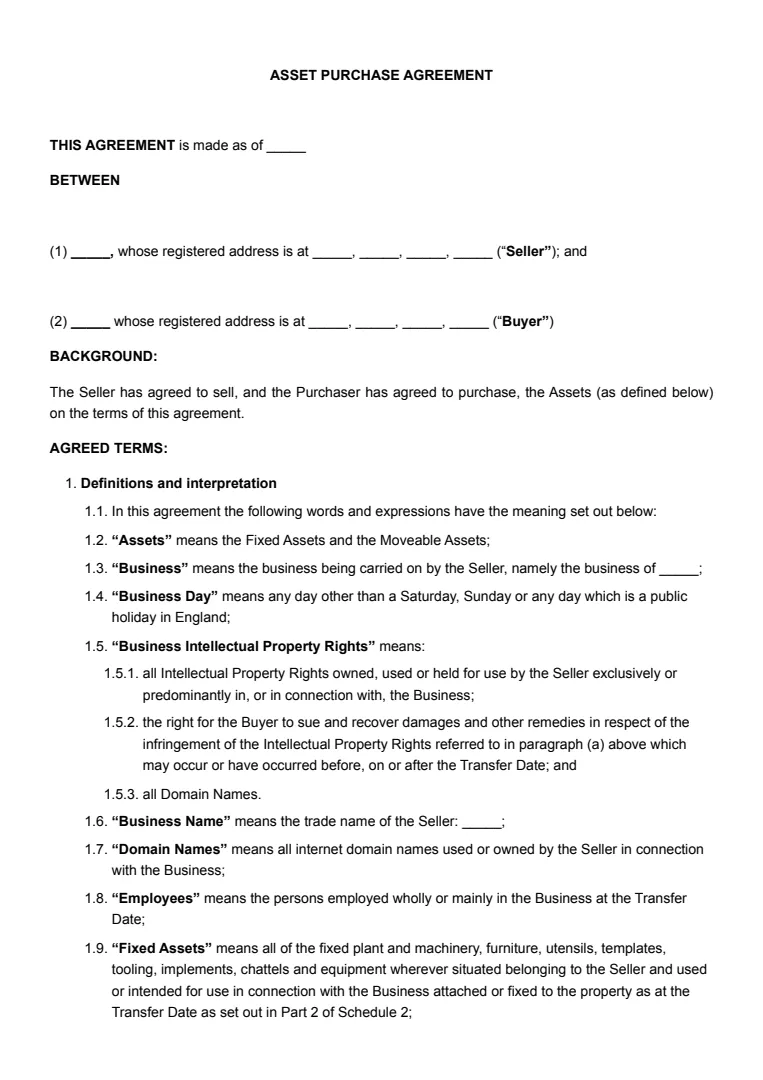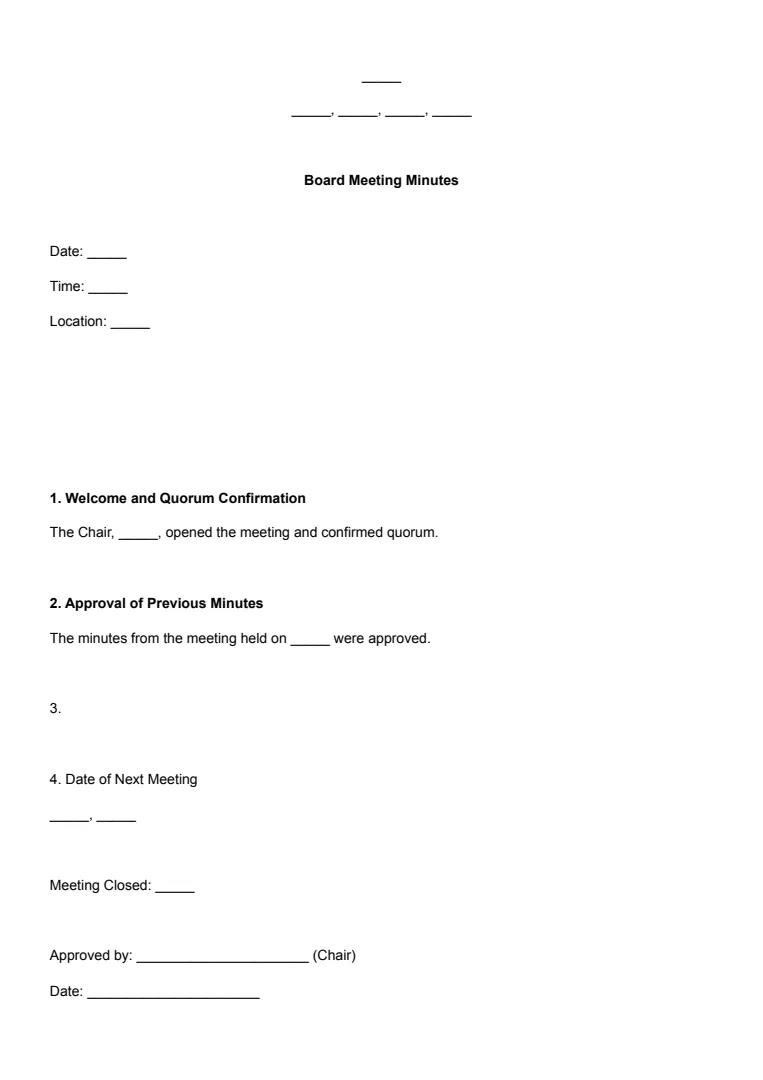What Is a Business Purchase Agreement?
A business purchase agreement, sometimes called a BPA or purchase of business agreement, is a legal document that outlines the terms and details when you’re buying or selling a business.
This business acquisition contract protects both the buyer and seller by clearly setting expectations and responsibilities on both sides.
Essentially, these sale of business agreements spell out what’s changing hands.
You’ll find information about the business description, assets, liabilities, and sometimes even the business’s location and industry.
This level of detail ensures there’s no confusion about what is included in the sale.
In a sample business purchase agreement, you may see a section describing the scope of the sale, including which assets or stock are included, as well as any property, contracts, or intellectual property that comes with the business.
Most agreements also cover price, payment terms, and any conditions of the sale.
It’s common for a BPA to include clauses about warranties, non-compete conditions, and confidentiality rules.
You wouldn’t want to buy a business only to learn that the seller can open a competing shop next door, so these agreements often include clear restrictions and rules.
By having everything in writing, you reduce misunderstandings and help make the business transaction as smooth as possible.
When Is a Business Purchase Agreement Needed?
You’ll need a business purchase agreement whenever you’re buying or selling a business, whether it’s a small shop, a partnership, a limited liability company (LLC), or a large corporation.
If ownership or business assets are being transferred, this agreement is how you make things official and protect both the seller and the buyer.
Here are some common scenarios where you would use this agreement:
- Sale of an Entire Business: If you’re acquiring all assets, customer contracts, and liabilities from another party.
- Sale of a Stake: When buying into a partnership or LLC, whether that’s a minority or controlling stake.
- Acquisition of a Corporation: For stock or share sales between individuals or firms.
A business purchase agreement is also critical during the due diligence period.
Both the buyer and seller need clear documentation of terms, representations, and obligations.
It’s especially relevant where regulatory, financial, or legal issues could affect the transfer.
Sometimes you’ll need an agreement even for asset-only sales rather than entire businesses. For example, acquiring equipment, inventory, or intellectual property on behalf of an LLC or partnership.
If there’s any risk of misunderstanding about what’s changing hands, who’s responsible for debts, or when ownership officially changes, you should use a business purchase agreement.
How to Write a Business Purchase Agreement
A BPA gives a framework for a business sale, ensuring clarity for both parties. You can follow these steps to write a contract for buying a business, avoiding potential disputes down the line.
Step 1: Gather Key Business Information
Begin by gathering all essential details about the business.
Ensure you know the business name, the parties involved, and a detailed description of the assets or shares being sold.
This information forms the foundation of your agreement.
Step 2: Use a Business Purchase Agreement Template
Next, use a purchase agreement template for a business to save time and ensure you include all essential elements.
Step 3: Specify the Purchase Price and Financial Details
Fill in the purchase price, breaking down how much is being paid for each part of the business if needed.
Include the deposit amount, how and when it’s paid, and any key financial terms.
Step 4: Define Payment Terms
Define the payment terms; will the buyer pay in full at closing, or over time in instalments?
Lay out the exact amounts, methods of payment, and due dates. It’s important to be explicit here to avoid confusion later.
Step 5: Add Terms, Conditions, and Warranties
Add the terms and conditions that both parties agree to.
These might include what happens if a party fails to meet their commitments, or any warranties and representations the seller must make.
Step 6: Include Conditions Precedent
Don’t forget about conditions precedent—these are the requirements that must be satisfied before the sale can be finalised.
Step 7: Clarify the Closing Details
Clearly state the closing date and completion details.
Specify where and how the final exchange of documents and money will take place, and what needs to be prepared for that day.
Step 8: Review and Final Legal Check
Finally, review everything for accuracy, consistency, and legal compliance.
It’s a smart move to have a solicitor look over your agreement before anyone signs.
















